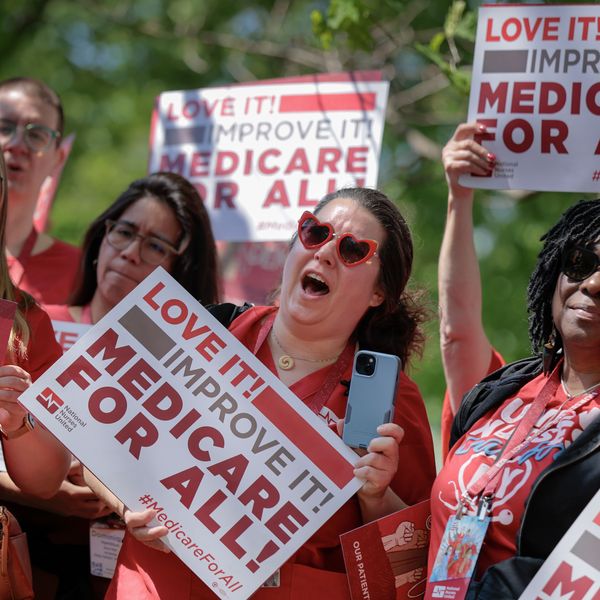Profit Share Hits Post-War High and the Post Doesn't Notice
The revised GDP data for the fourth quarter released yesterday showed the profit share of corporate income hitting 25.6 percent. This is the highest since it stood at 25.8 percent in 1951. However if we look at the after-tax share of 19.2 percent, we would have to go back to 20.8 percent share in 1930 to find a higher number, excepting of course the 19.3 percent number hit last year.

This surge in profits in a weak economy (profits tend to move with the cycle) is striking but readers of the Washington Post version of AP piece on the data wouldn't know anything about it. This piece includes no mention of the jump in corporate profits in 2012.
There are a few other issues that the piece could have better presented to readers. It noted that:
"The fourth quarter was hurt by the sharpest fall in defense spending in 40 years."
It would have been useful to point out that defense spending reportedly rose at an extraordinary 12.9 percent annual rate in the third quarter. Defense spending is often erratic from quarter to quarter; this is why it is important to put sharp changes in context. The same applies to the GDP growth numbers more generally. The 0.4 percent growth rate for the fourth quarter looks like a sharp slowdown from the 3.1 percent rate in the third quarter, but the growth rate of final demand (which excludes inventory fluctuations) was little changed, falling from 2.4 percent in the third quarter to 1.9 percent in the fourth quarter.
This piece also highlights the drop in unemployment claims in recent weeks to their lowest level since the downturn began (although there was a jump last week). While this decline is good news, there is an important caution. As the period of high unemployment drags on, a larger percentage of newly laid off workers will not qualify for unemployment benefits. The reason is that many of the people laid off are likely to have been unemployed for substantial stretches in last two years and therefore ineligible for benefits. It would require a careful analysis of data on individual work histories to determine the exact impact of recent stretches of unemployment on eligibility. But if the share of ineligible workers among the newly unemployed has increased by 5 percentage points since the start of the downturn, it would mean that the same number of layoffs would translate into roughly 20,000 fewer claims.
An Urgent Message From Our Co-Founder
Dear Common Dreams reader, The U.S. is on a fast track to authoritarianism like nothing I've ever seen. Meanwhile, corporate news outlets are utterly capitulating to Trump, twisting their coverage to avoid drawing his ire while lining up to stuff cash in his pockets. That's why I believe that Common Dreams is doing the best and most consequential reporting that we've ever done. Our small but mighty team is a progressive reporting powerhouse, covering the news every day that the corporate media never will. Our mission has always been simple: To inform. To inspire. And to ignite change for the common good. Now here's the key piece that I want all our readers to understand: None of this would be possible without your financial support. That's not just some fundraising cliche. It's the absolute and literal truth. We don't accept corporate advertising and never will. We don't have a paywall because we don't think people should be blocked from critical news based on their ability to pay. Everything we do is funded by the donations of readers like you. Will you donate now to help power the nonprofit, independent reporting of Common Dreams? Thank you for being a vital member of our community. Together, we can keep independent journalism alive when it’s needed most. - Craig Brown, Co-founder |
The revised GDP data for the fourth quarter released yesterday showed the profit share of corporate income hitting 25.6 percent. This is the highest since it stood at 25.8 percent in 1951. However if we look at the after-tax share of 19.2 percent, we would have to go back to 20.8 percent share in 1930 to find a higher number, excepting of course the 19.3 percent number hit last year.

This surge in profits in a weak economy (profits tend to move with the cycle) is striking but readers of the Washington Post version of AP piece on the data wouldn't know anything about it. This piece includes no mention of the jump in corporate profits in 2012.
There are a few other issues that the piece could have better presented to readers. It noted that:
"The fourth quarter was hurt by the sharpest fall in defense spending in 40 years."
It would have been useful to point out that defense spending reportedly rose at an extraordinary 12.9 percent annual rate in the third quarter. Defense spending is often erratic from quarter to quarter; this is why it is important to put sharp changes in context. The same applies to the GDP growth numbers more generally. The 0.4 percent growth rate for the fourth quarter looks like a sharp slowdown from the 3.1 percent rate in the third quarter, but the growth rate of final demand (which excludes inventory fluctuations) was little changed, falling from 2.4 percent in the third quarter to 1.9 percent in the fourth quarter.
This piece also highlights the drop in unemployment claims in recent weeks to their lowest level since the downturn began (although there was a jump last week). While this decline is good news, there is an important caution. As the period of high unemployment drags on, a larger percentage of newly laid off workers will not qualify for unemployment benefits. The reason is that many of the people laid off are likely to have been unemployed for substantial stretches in last two years and therefore ineligible for benefits. It would require a careful analysis of data on individual work histories to determine the exact impact of recent stretches of unemployment on eligibility. But if the share of ineligible workers among the newly unemployed has increased by 5 percentage points since the start of the downturn, it would mean that the same number of layoffs would translate into roughly 20,000 fewer claims.
The revised GDP data for the fourth quarter released yesterday showed the profit share of corporate income hitting 25.6 percent. This is the highest since it stood at 25.8 percent in 1951. However if we look at the after-tax share of 19.2 percent, we would have to go back to 20.8 percent share in 1930 to find a higher number, excepting of course the 19.3 percent number hit last year.

This surge in profits in a weak economy (profits tend to move with the cycle) is striking but readers of the Washington Post version of AP piece on the data wouldn't know anything about it. This piece includes no mention of the jump in corporate profits in 2012.
There are a few other issues that the piece could have better presented to readers. It noted that:
"The fourth quarter was hurt by the sharpest fall in defense spending in 40 years."
It would have been useful to point out that defense spending reportedly rose at an extraordinary 12.9 percent annual rate in the third quarter. Defense spending is often erratic from quarter to quarter; this is why it is important to put sharp changes in context. The same applies to the GDP growth numbers more generally. The 0.4 percent growth rate for the fourth quarter looks like a sharp slowdown from the 3.1 percent rate in the third quarter, but the growth rate of final demand (which excludes inventory fluctuations) was little changed, falling from 2.4 percent in the third quarter to 1.9 percent in the fourth quarter.
This piece also highlights the drop in unemployment claims in recent weeks to their lowest level since the downturn began (although there was a jump last week). While this decline is good news, there is an important caution. As the period of high unemployment drags on, a larger percentage of newly laid off workers will not qualify for unemployment benefits. The reason is that many of the people laid off are likely to have been unemployed for substantial stretches in last two years and therefore ineligible for benefits. It would require a careful analysis of data on individual work histories to determine the exact impact of recent stretches of unemployment on eligibility. But if the share of ineligible workers among the newly unemployed has increased by 5 percentage points since the start of the downturn, it would mean that the same number of layoffs would translate into roughly 20,000 fewer claims.

